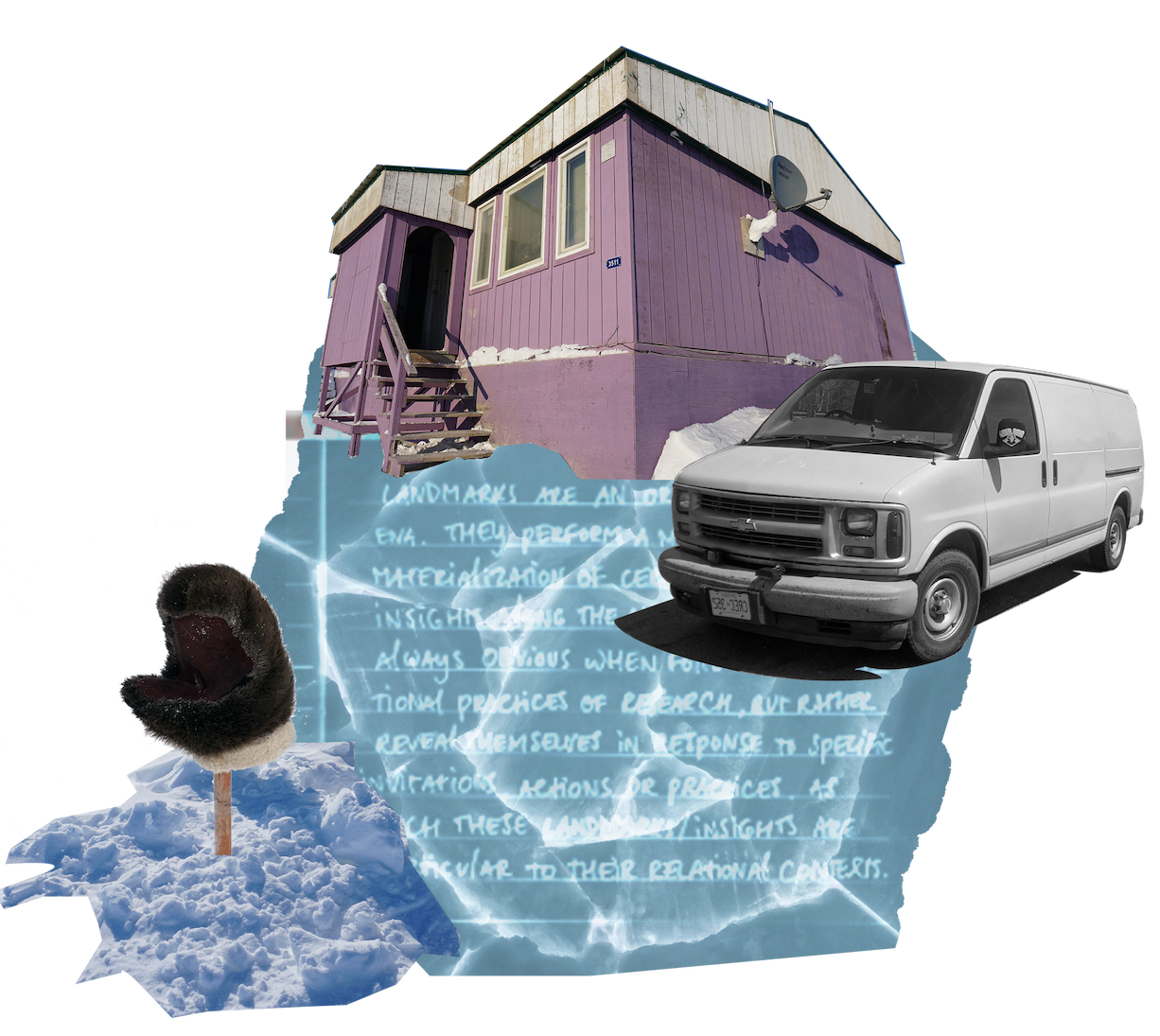Gaps, Openings and Possibilities: Difference between revisions
No edit summary |
No edit summary |
||
| (2 intermediate revisions by the same user not shown) | |||
| Line 1: | Line 1: | ||
[[File:Landmark small.png|thumb]] | |||
Gaps are not just failures, or oversights. They can also be openings where new possibilities emerge. | |||
<span class="return link" data-page-title="Preparation Gjoa Haven Workshop" data-section-id="6" data-encounter-type="return">[[Preparation Gjoa Haven Workshop#Scientific Presentations|Cut 2: Gjoa Haven Workshop]]</span> | Some events unfold through entanglements, not merely by following fixed plans. | ||
When things don’t happen as expected, these ruptures disrupt control but also create space for new ways of knowing and relating. | |||
This is crucial, precisely because we don’t know what we don’t know. | |||
Unanticipated gaps reveal possibilities beyond our initial frameworks, allowing knowledge and collaboration to be reconfigured in ways we couldn’t have predicted. | |||
<span class="return link" data-page-title="Preparation Gjoa Haven Workshop" data-section-id="6" data-encounter-type="return">[[Preparation Gjoa Haven Workshop#Scientific Presentations|Return to Cut 2: Gjoa Haven Workshop]]</span> | |||
Latest revision as of 13:18, 18 July 2025

Gaps are not just failures, or oversights. They can also be openings where new possibilities emerge.
Some events unfold through entanglements, not merely by following fixed plans.
When things don’t happen as expected, these ruptures disrupt control but also create space for new ways of knowing and relating.
This is crucial, precisely because we don’t know what we don’t know.
Unanticipated gaps reveal possibilities beyond our initial frameworks, allowing knowledge and collaboration to be reconfigured in ways we couldn’t have predicted.
